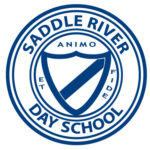One of our greatest strengths is our ability to anticipate what students need to be successful - and to adapt quickly to meet those needs.
Through innovation and individual focus, learning feels challenging and satisfying.
For example, as technology continues to grow as a learning tool, we’ve implemented a “Bring Your Own Device” (BYOD) program and adjusted teaching styles accordingly.
“With their laptops or iPads in front of them, students have so much at their fingertips,” explains Laura Hollis, director of technology. “Our new role as teachers is to lead them as they explore, and to show them how information connects to their lives.”
Technology is also part of our STEAM initiative. STEAM integrates the classic sciences of biology, chemistry and physics with the applied sciences of technology and engineering using the languages of art and mathematics. One assignment involved writing a short film about a math and physics superhero, which students produced with the school’s top-of-the-line A/V equipment. Reflecting real life, STEAM doesn’t segment knowledge into disciplines—it invites students to bring everything they know to bear on a project.
Our K-12 research curriculum, developed by teachers and administrators, shows students how to gather, analyze and synthesize information. An abundant digital resource catalog and tech-ready collaborative spaces in our library and media center support independent and group research.
“Our students can’t wait to get in the lab. They think of themselves as scientists, and as part of a team.”
–Eileen Lambert, Head of School
Excellence in Teaching
SRDS teachers create active learning opportunities that go beyond content knowledge to develop deeper understanding. As part of our strategic plan, the Excellence in Teaching initiative requires all teachers to earn their master’s degree within five years of their hiring. Currently, 65 percent of our faculty holds advanced degrees, and five additional teachers are working toward their masters. One hundred percent accessed our generous professional development funds last year.
“The disciplines are porous. We teach students to apply knowledge and skill sets to create a framework for understanding the world and themselves as learners.”
–Middle School faculty member

